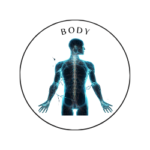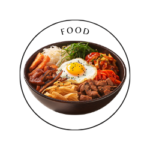 Mind
Mind
- Digital and Modern Well-being
- Mental Health and Emotional Well-being
- Mind-Body Connection and Holistic Health
- Parenting and Family
- Personal Growth and Development
- Relationships and Social Well-being
- Stress and Relaxation
- Therapeutic and Creative Practices
- Trauma and Recovery
- Work, Productivity, and Discipline
 Body
Body
 Fitness
Fitness
 Food
Food
 Beauty
Beauty
Gluten-Free Eating

Health Benefits of Going Gluten-Free
Switching to a gluten-free diet can offer a range of health benefits, particularly for those who need to avoid gluten for medical reasons. Here are some of the top advantages:
1. Improved Digestive Health
Removing gluten can alleviate symptoms like bloating, gas, diarrhoea, and stomach pain for people with gluten intolerance or sensitivity. A gluten-free diet often results in better digestion and fewer digestive discomforts.
2. Increased Energy Levels
Many people with celiac disease or gluten sensitivity experience fatigue as a result of malabsorption of nutrients. A gluten-free diet helps the intestines heal, allowing the body to better absorb vitamins and minerals, which can lead to increased energy.
3. Healthier Skin
Some people report clearer skin after going gluten-free, as gluten has been linked to certain skin conditions like dermatitis herpetiformis, a rash associated with celiac disease.
4. Reduced Inflammation
A gluten-free diet can help reduce inflammation in individuals with gluten-related disorders. Since gluten triggers an immune response in those with celiac disease, avoiding it helps to reduce overall inflammation in the body, which can contribute to better health and well-being.
What to Eat on a Gluten-Free Diet
Maintaining a gluten-free diet requires careful attention to ingredient lists and labels, but there is a wide variety of nutritious and naturally gluten-free foods available. Here are some key food categories:
1. Naturally Gluten-Free Foods
- Fruits and Vegetables: All fresh fruits and vegetables are gluten-free and packed with nutrients.
- Meat, Poultry, and Fish: Unprocessed meat, chicken, and fish are naturally gluten-free.
- Eggs: A protein-rich food that fits perfectly into a gluten-free diet.
- Dairy Products: Milk, cheese, and yoghurt are typically gluten-free unless they contain additives or flavourings.
- Legumes and Beans: Beans, lentils, and peas are naturally gluten-free and excellent sources of protein and fibre.
2. Gluten-Free Grains and Alternatives
- Rice: Brown and white rice are great staples for a gluten-free diet.
- Quinoa: A high-protein, gluten-free grain that’s versatile and nutritious.
- Amaranth, Millet, and Buckwheat: These lesser-known grains are naturally gluten-free and great for baking and cooking.
- Corn and Cornmeal: Corn is a gluten-free grain that can be used in a variety of forms, from tortillas to cornmeal-based dishes.
- Gluten-Free Oats: While oats are naturally gluten-free, they are often processed in facilities that handle gluten-containing grains. Be sure to choose certified gluten-free oats.
3. Gluten-Free Flours
- Almond Flour: A low-carb alternative that’s great for baking.
- Coconut Flour: High in fibre and a good choice for gluten-free desserts.
- Rice Flour: A common substitute for wheat flour in gluten-free recipes.
- Tapioca, Potato, and Arrowroot Flours: These starches add texture to gluten-free baked goods.
4. Packaged Foods
- Always check the label on packaged foods. Many processed items contain gluten, even if it’s not obvious. Look for products labelled “gluten-free,” which have been certified to contain less than 20 parts per million (ppm) of gluten, the safe limit for individuals with celiac disease.
What to Avoid on a Gluten-Free Diet
While many foods are naturally gluten-free, it’s important to be cautious of certain ingredients that contain gluten:
- Wheat, Barley, and Rye: These grains and their derivatives should be avoided in all forms.
- Processed Foods: Many processed foods, such as soups, sauces, and salad dressings, may contain hidden gluten in the form of thickeners or additives.
- Beer and Malt Beverages: Regular beer contains barley and should be avoided unless it’s labelled gluten-free.
- Baked Goods: Unless made with gluten-free flours, traditional bread, pastries, cakes, and cookies contain gluten.
Tips for Eating Out Gluten-Free
Navigating a gluten-free diet in restaurants can be challenging, but with a few strategies, it’s possible to enjoy eating out while avoiding gluten:
- Do Your Research: Many restaurants offer gluten-free menus or are willing to accommodate dietary restrictions. Look for places that are known for their gluten-free options.
- Ask Questions: Don’t hesitate to ask the waiter or chef how dishes are prepared and if there’s any risk of cross-contamination.
- Simple is Best: Choose dishes that are naturally gluten-free, such as grilled meats, salads without croutons, and steamed vegetables.
Is Gluten-Free Healthier for Everyone?
While a gluten-free diet is essential for people with gluten intolerance, celiac disease, or wheat allergies, there’s no strong evidence to suggest that eliminating gluten is healthier for those who can tolerate it. Gluten-containing whole grains like wheat, barley, and rye are rich in fibre and essential nutrients. If you don’t need to avoid gluten, it’s important to make sure you’re still getting enough fibre and nutrients from other sources, especially if you choose to cut gluten out.
Conclusion
For individuals with gluten-related disorders, a gluten-free diet is a necessity that can lead to improved health, better digestion, and a higher quality of life. By focusing on naturally gluten-free whole foods and being mindful of hidden sources of gluten, you can enjoy a diverse and healthy diet while avoiding the risks associated with gluten. Whether you need to follow a gluten-free lifestyle for medical reasons or choose it for personal well-being, the key is to ensure your diet remains balanced, nutritious, and delicious.
